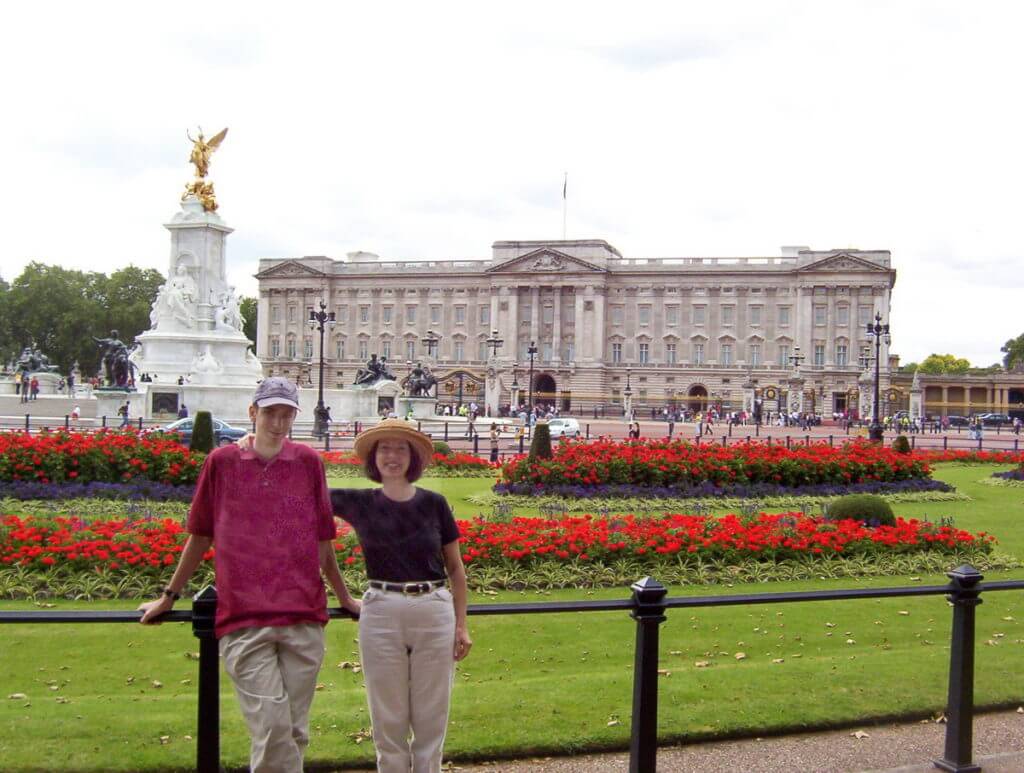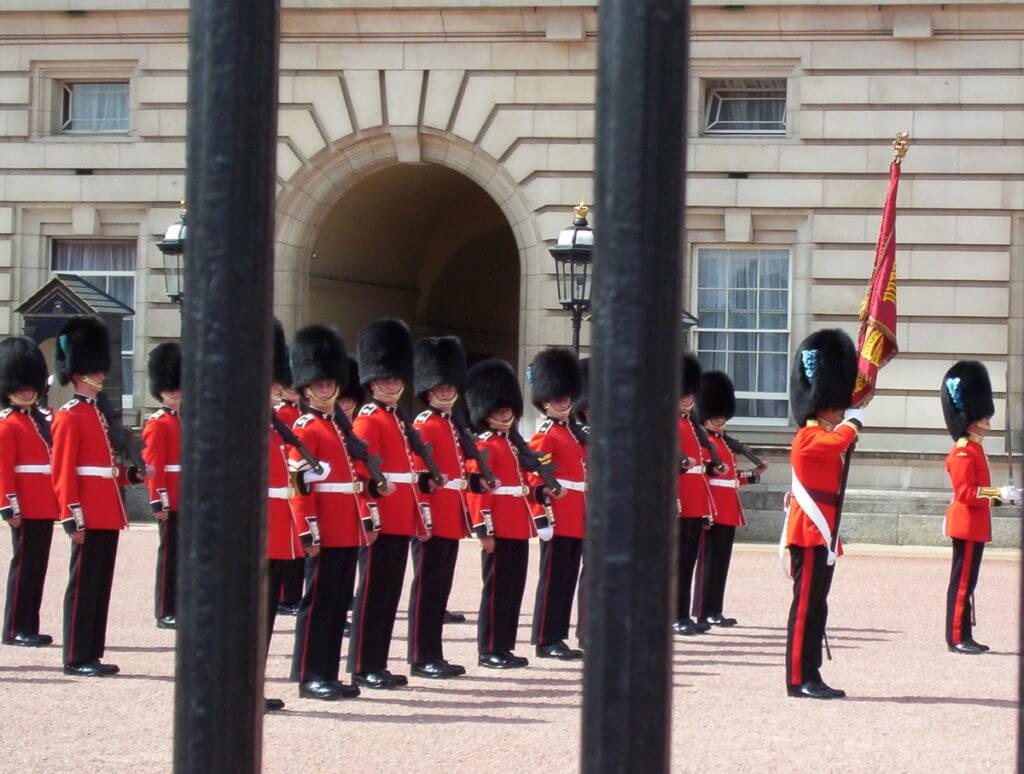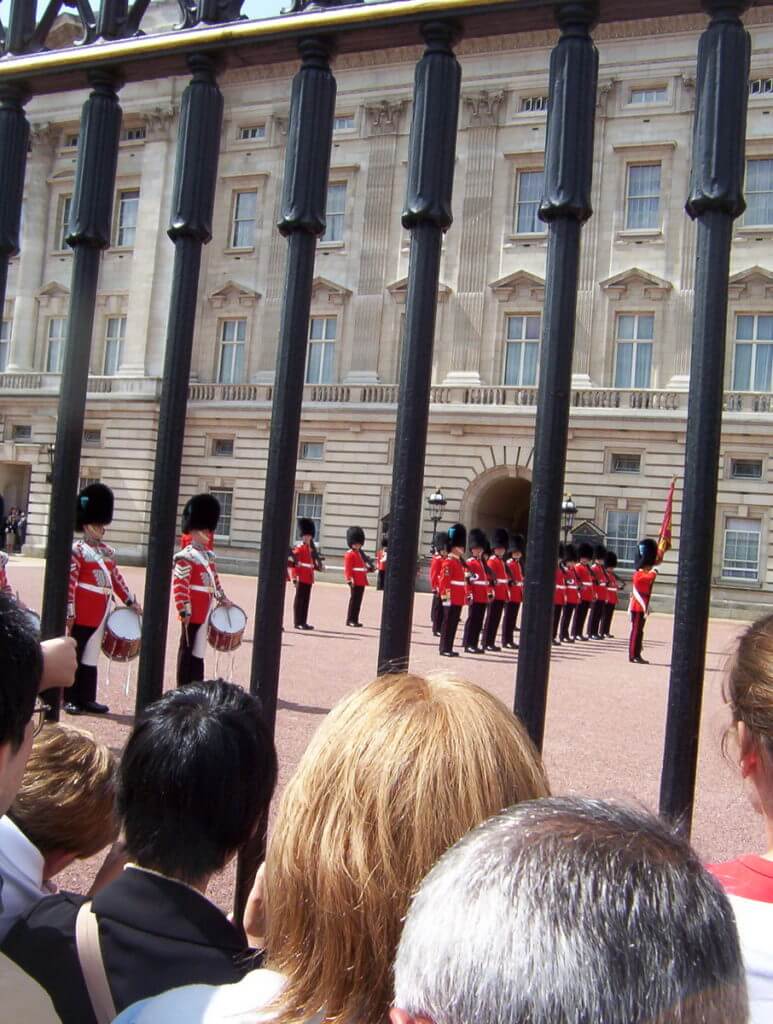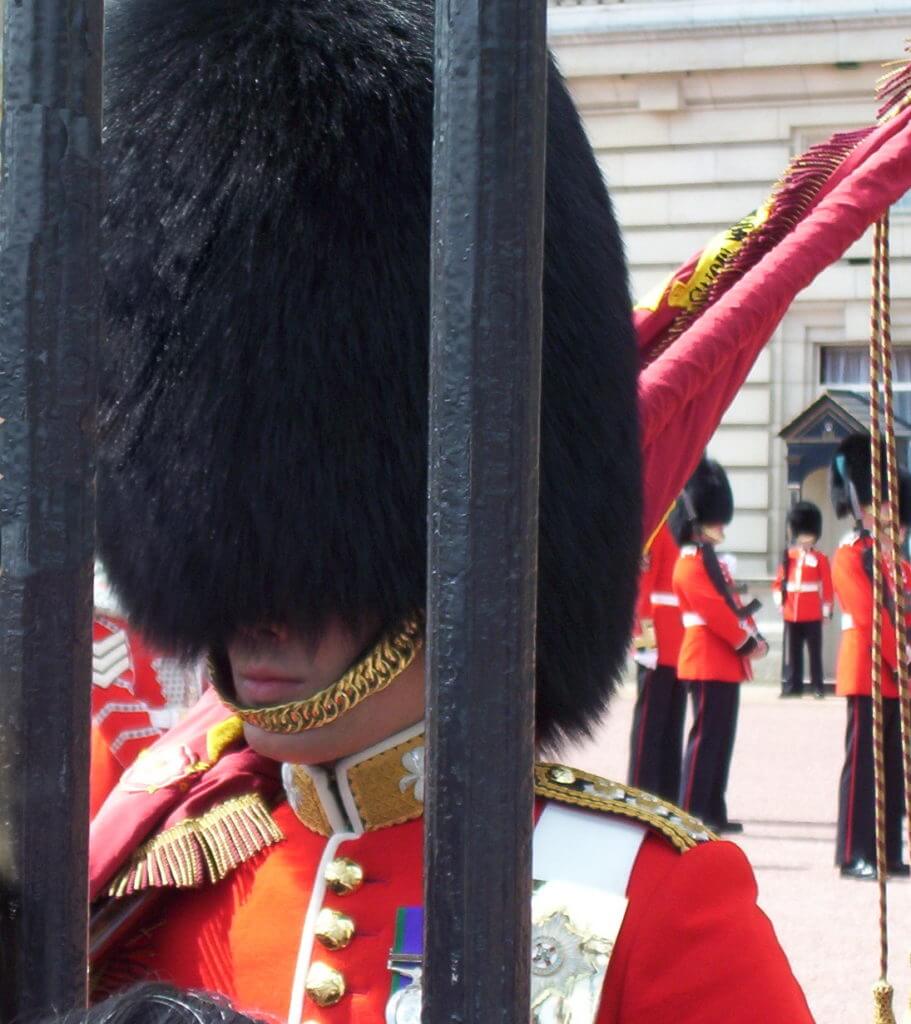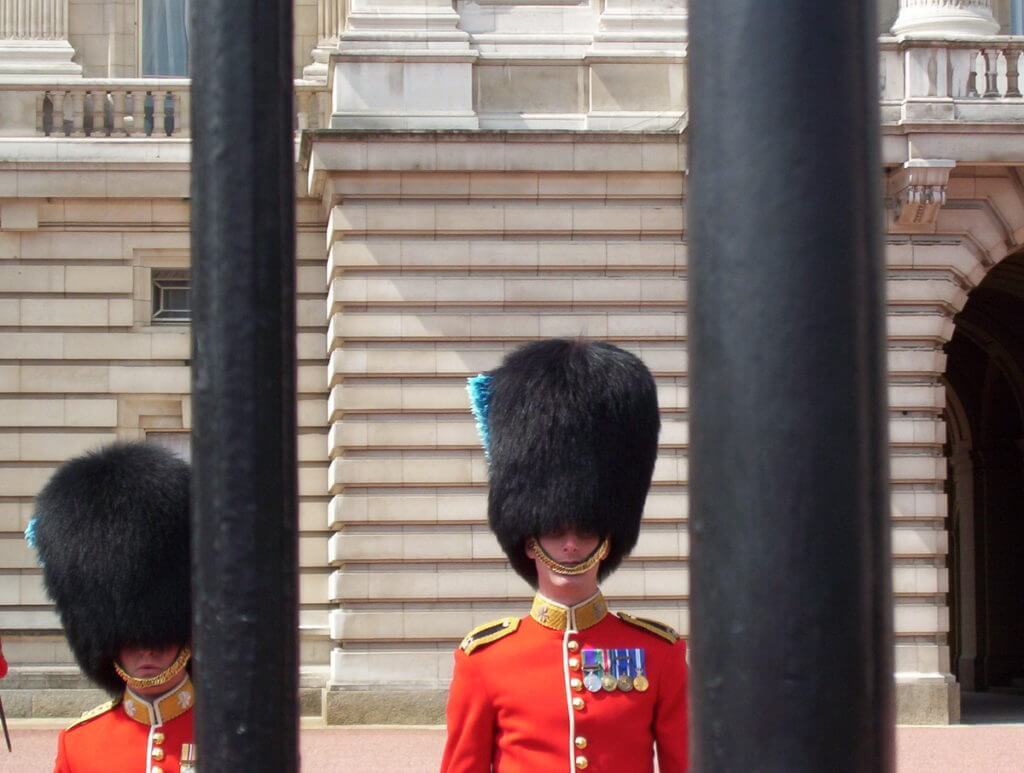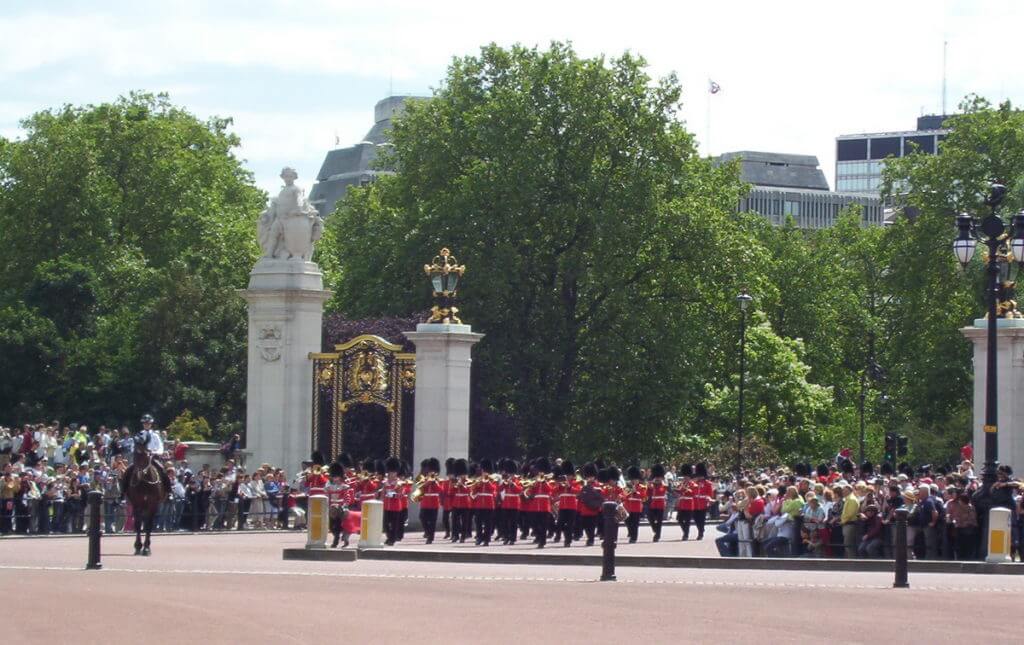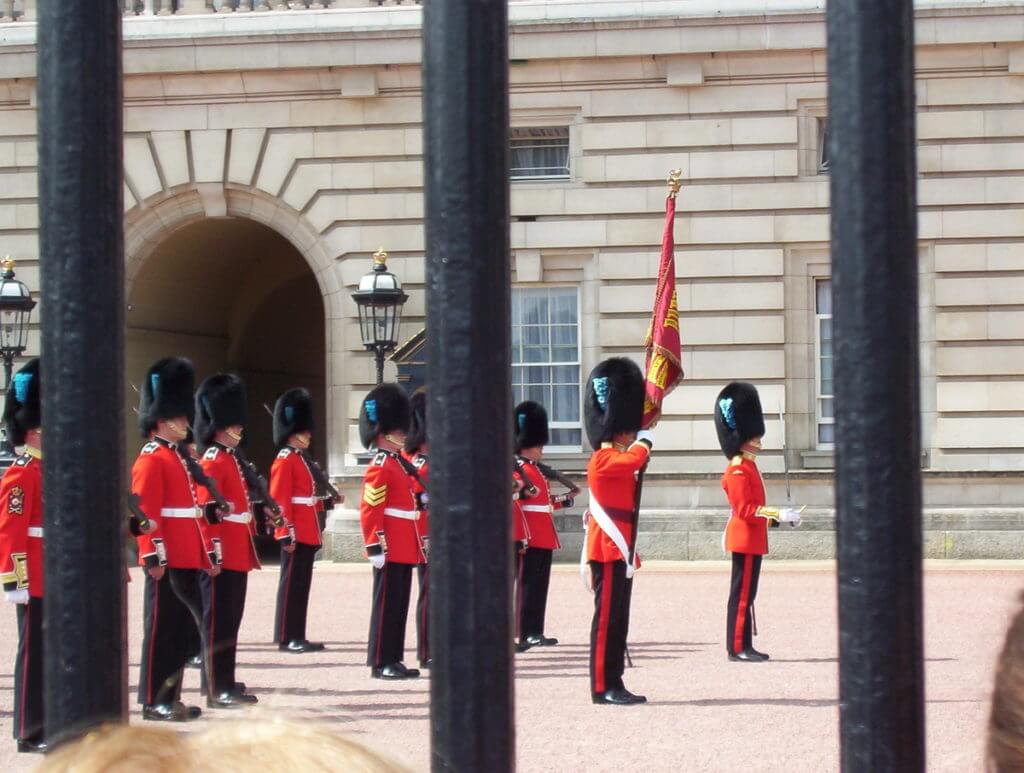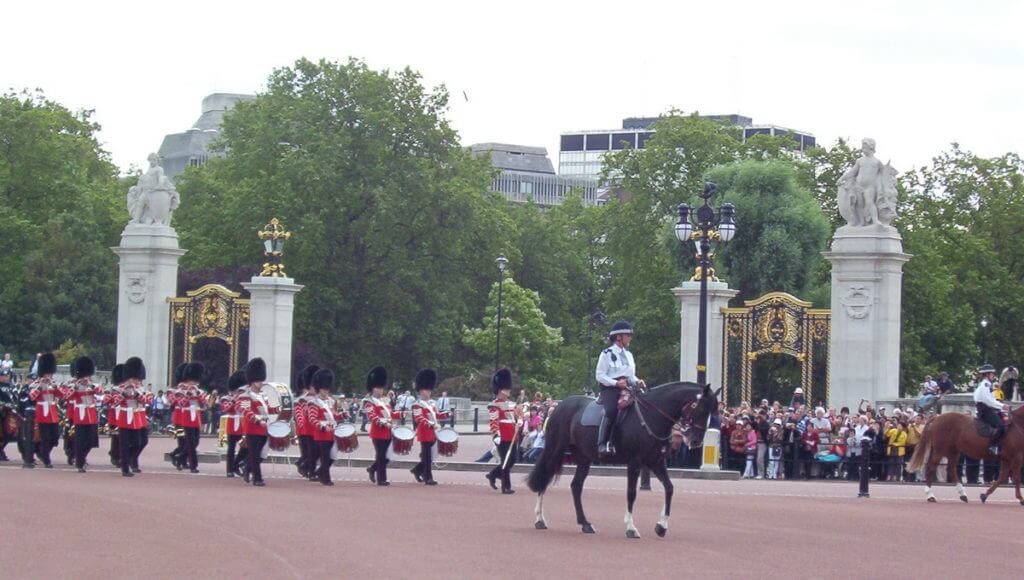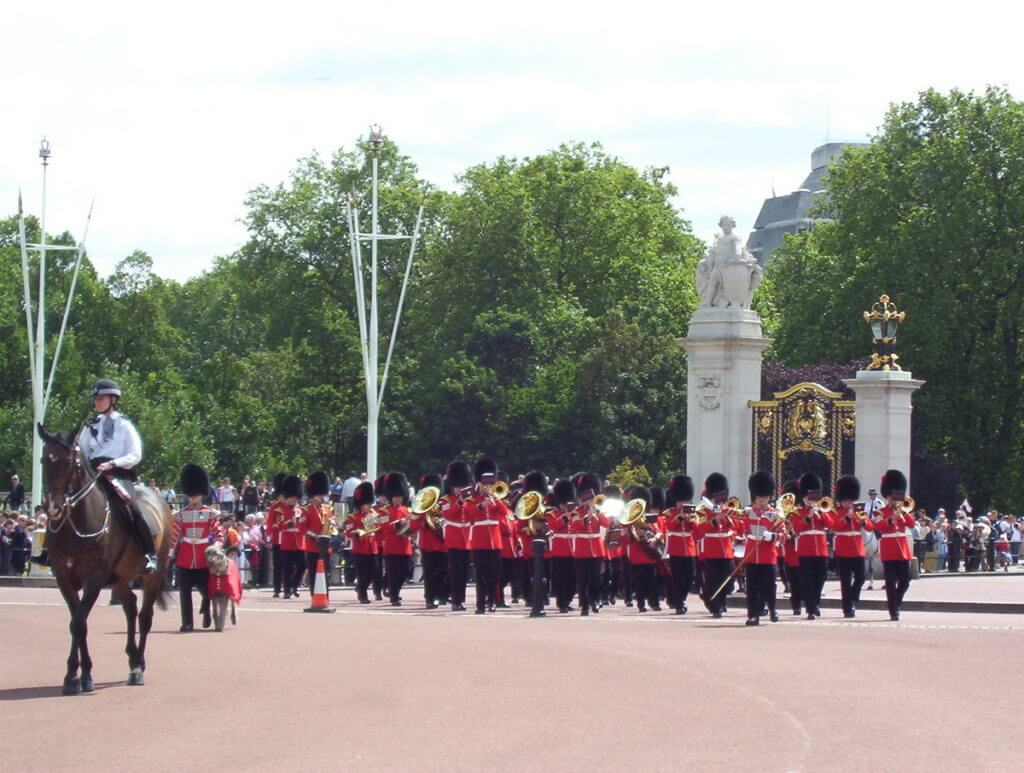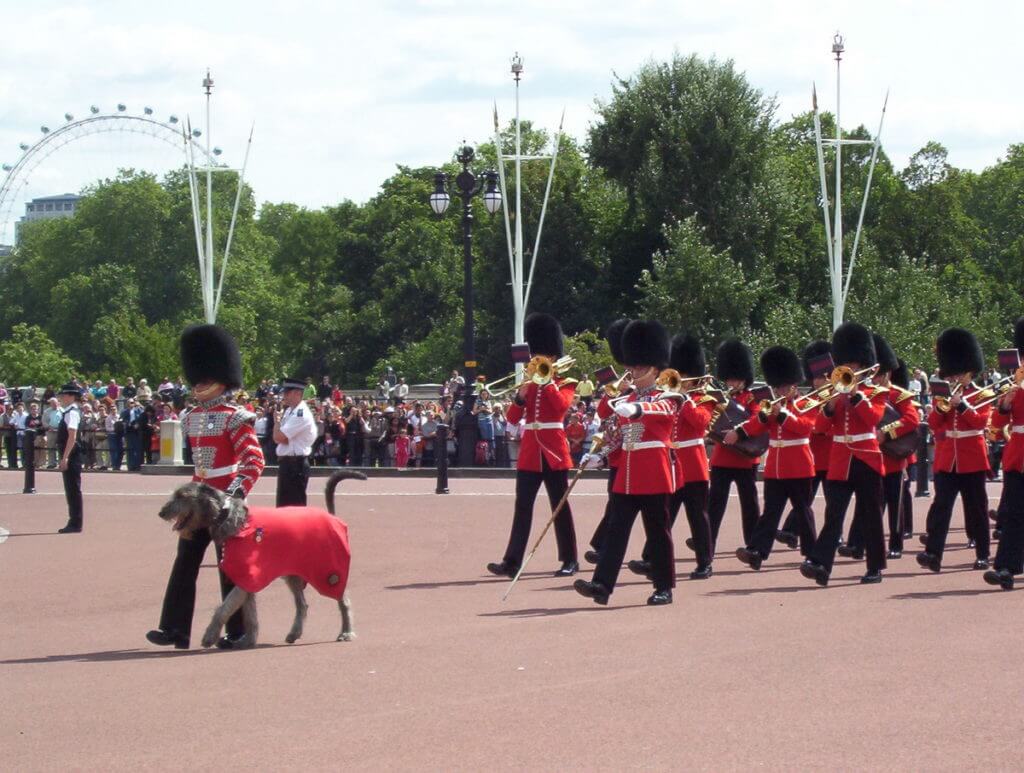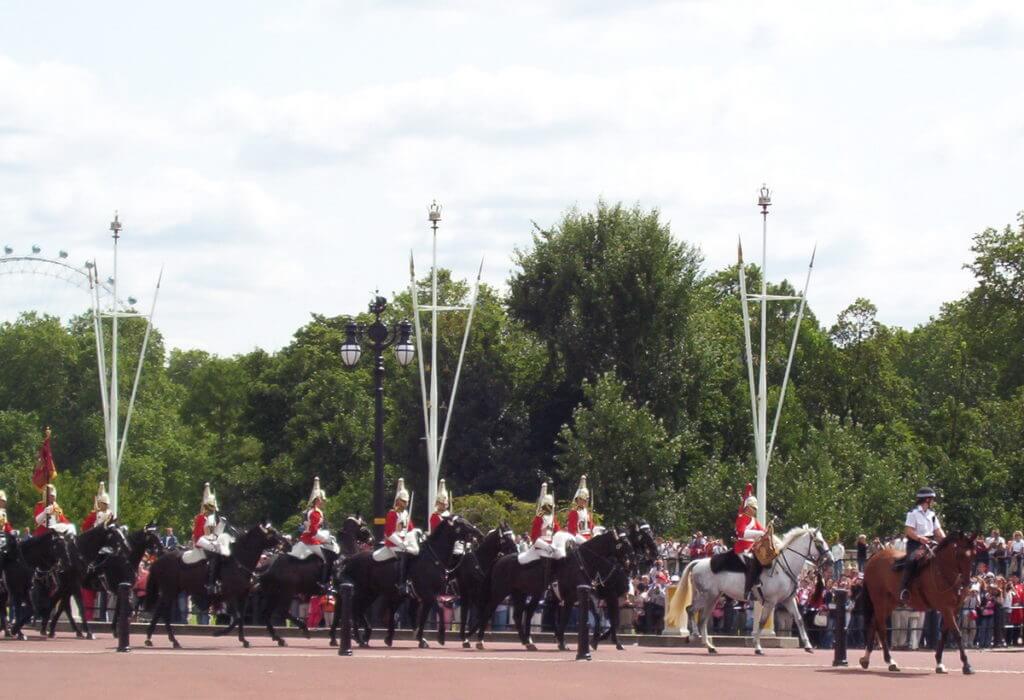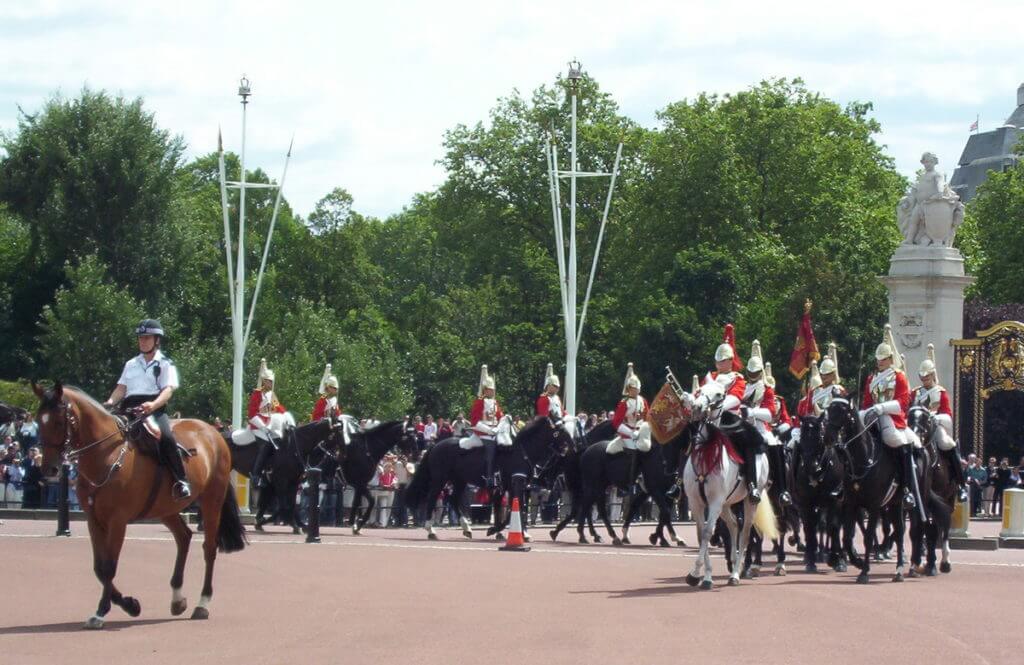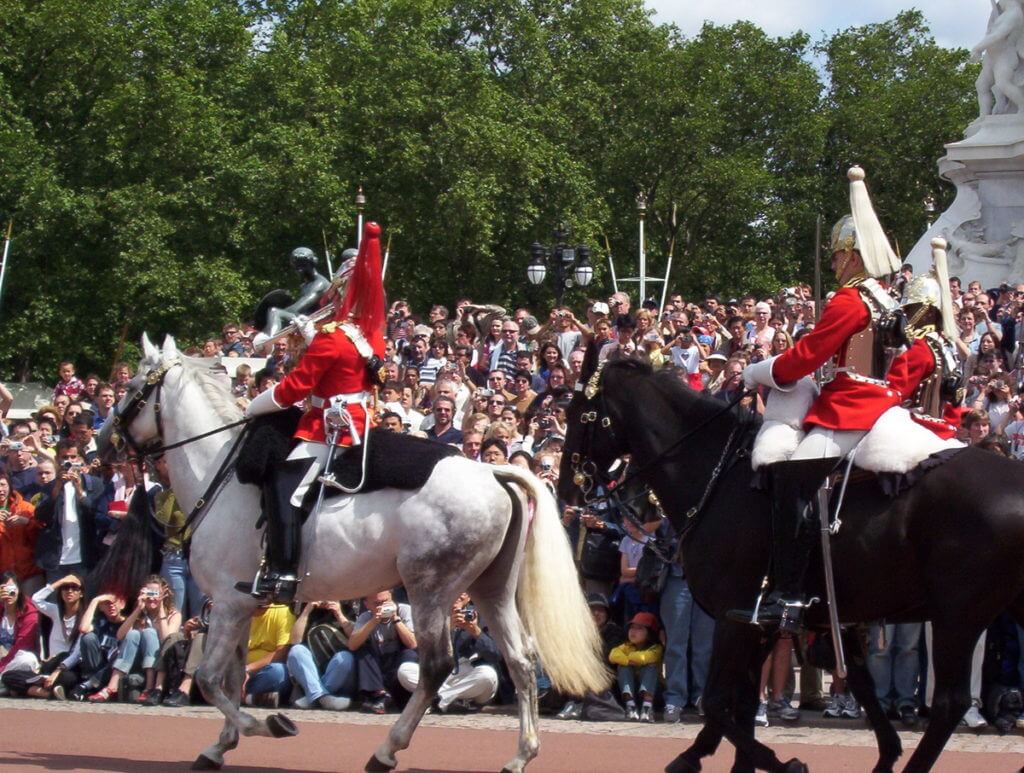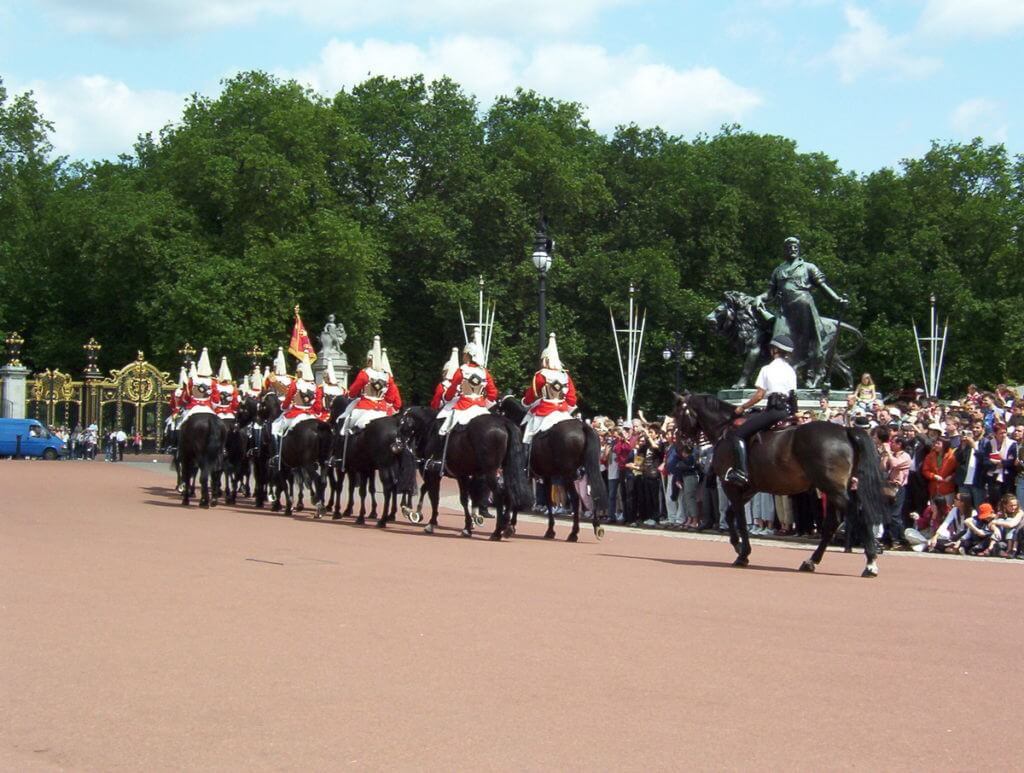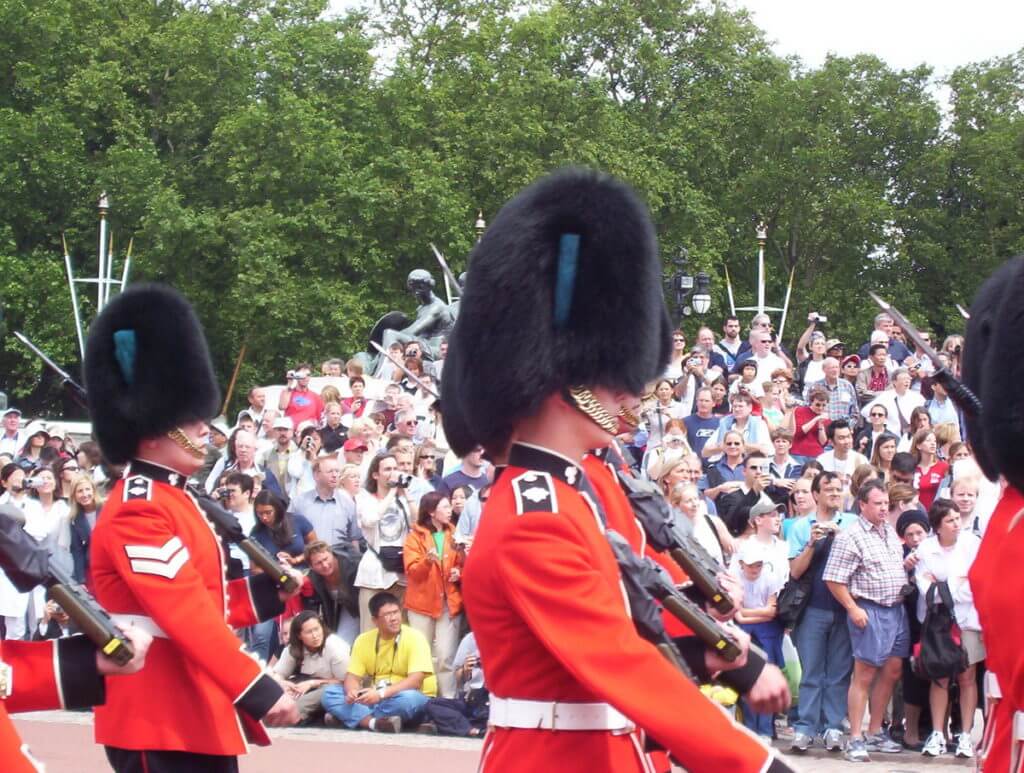Travelling down memory lane:The Changing of Guard at Buckingham Palace

Our walking tours of London, England spanned the course of several days and were split between two different weeks. A visit to Buckingham Palace topped off all the marvelous sights we saw in that world class city that has history dating back to Roman times.
Of course, it was very meaningful to finally see Westminster Bridge with Big Ben in the background, and a multitude of other noteworthy sights,
but it was the ceremony of the Changing of Guard at Buckingham Palace that we were anxious to witness. It is a highly popular attraction that draws hundreds of tourists from around the world.
We arrived at Buckingham Palace early and made right for the wrought iron fencing that surrounds the Forecourt inside the Palace walls. This gave us a dandy view of the Buckingham Palace Detachment of the Queen’s Guard (Old Guard) that had formed up and was awaiting the arrival of the New Guard.
The Queen’s Guard is traditionally made up of soldiers from one of the five regiments of the Household Division’s Foot Guards. They are instantly recognizable by their tall bearskin hats and scarlet tunics.
Placement of the buttons on the Foot Guards’ tunics distinguishes one regiment from another. The day we visited, the Foot Guards on duty were from the regiment of Irish Guards discernible to the average observer by the St. Patrick’s blue plume on the right side of each bearskin hat.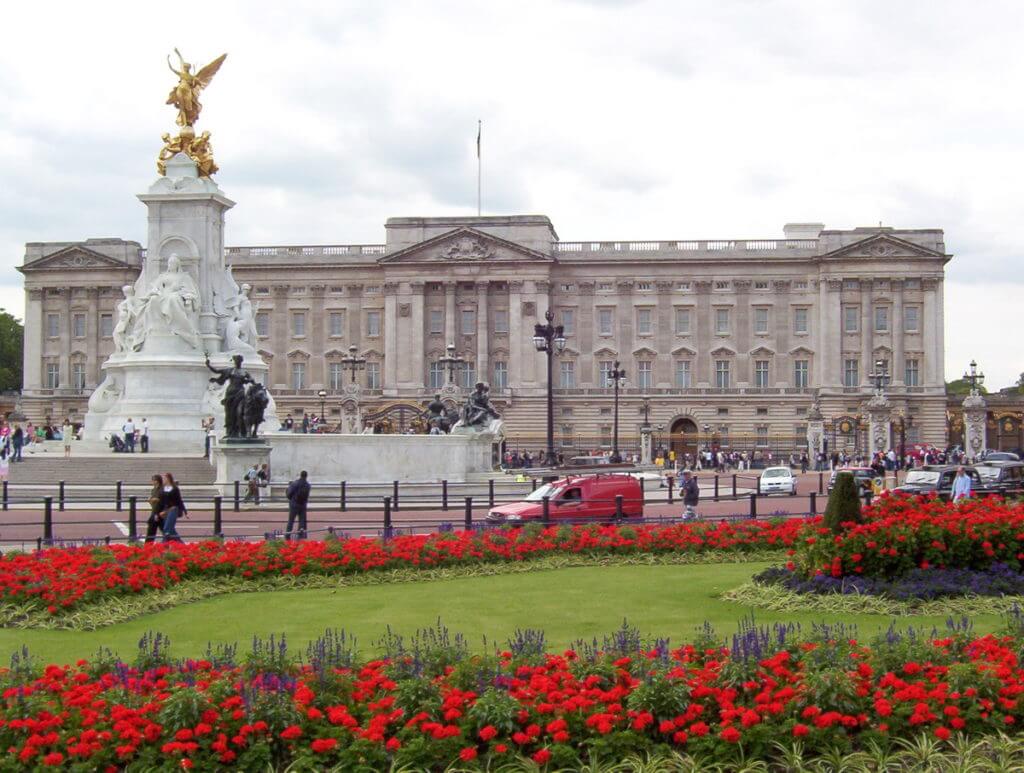
Dominating the square in front of Buckingham Palace is the Victoria Memorial. It stands at the end of The Mall in London and is erected directly in front of the Palace’s main gate.
Soon drawing our eyes away from the magnificence of the Victoria Memorial was the sound of a marching band approaching up The Mall towards the Palace Gates. This was the Corps of Drums that provides musical support to the second detachment of the Old Guard marching to Buckingham Palace from St. James’s Palace, Queen Elizabeth II’s former official residence.
This second detachment of the Queen’s Guard was still on duty…
as was the detachment in the Forecourt until these two regiments of the Old Guard convene then pass on the duty to the New Guard. This military ceremony is also called Guard Mounting.
The New Guard meanwhile had formed up and was inspected at Wellington Barracks before marching to the Forecourt of Buckingham Palace. During the wait and then the procession to Buckingham Palace, the New Guard is provided with musical accompaniment by a full Military Band. A mounted police officer precedes the marching Regimental Band and detachment of the New Guard along Spur Road.
When the Regimental Band entered the main square in front of the Palace Gates, we knew that the New Guard was close behind. It took no guessing to realize that the New Guard had also been assembled from members of the Regiment of Irish Guards, a fact betrayed by the presence of Donnchad, their Irish Wolfhound mascot.
Since 1902, an Irish Wolfhound has stood as the mascot for the Irish Foot Guards. The Irish Guards regiment is the only regiment allowed to be led on parade by their mascot.
The Guardsmen are highly trained infantry soldiers who have normal combat roles, so they are well-equipped to protect Buckingham Palace and St. James’s Palace.
In addition to the 5 infantry regiments, The Guards include two regiments of the Household Cavalry, the Life Guards and the Blues and Royals. The mounted guard is called the Queen’s Life Guard.
What an impressive show of precision and pageantry when this regiment of Life Guards paraded into the square. Life Guards wear a red tunic and a metal cuirass (shield). A white plume sprouts from their helmets, and it is bound up into an onion shape on top.
The stirring music played by the military musicians added great flair to the colourful spectacle, and the immaculately turned out guards completed the precise military pageantry.
Queen Elizabeth II often rode her horse named Burmese, a black RCMP Police Service Horse mare, which was given to Queen Elizabeth II by the Royal Canadian Mounted Police. In this photo the Queen is taking part in the Trooping the Color in 1986. Burmese her horse was trained and presented by RCMP Staff Sergeant Fred Rasmussen in 1969. (Photo courtesy: Sandpiper/Wikimedia Commons).
The pomp and ceremony is a reminder of the former close relationship between the Armed Forces and their head, the former Queen. The practice of guarding the Sovereign and Royal Palaces has been carried out since 1660.
It was Queen Victoria however, in 1837, who actually moved into Buckingham Palace bringing about the requirement for 2 detachments of Queen’s Guard on duty at once, one to guard Buckingham Palace and the other to watch over St. James’s Palace.
While the Old Guard and New Guard go about the process of passing responsibility from one to the other, the bands entertain the crowds and Guards alike in front of the Palace gates.
After presenting arms and passing along the Palace keys, the Old Guard marches out and is joined by the band, which leads the way back to Wellington Barracks. The whole proceedings certainly epitomize the military ceremony for which Britain is famous. It was quite the highlight of our visit to London.
Frame To Frame – Bob and Jean

